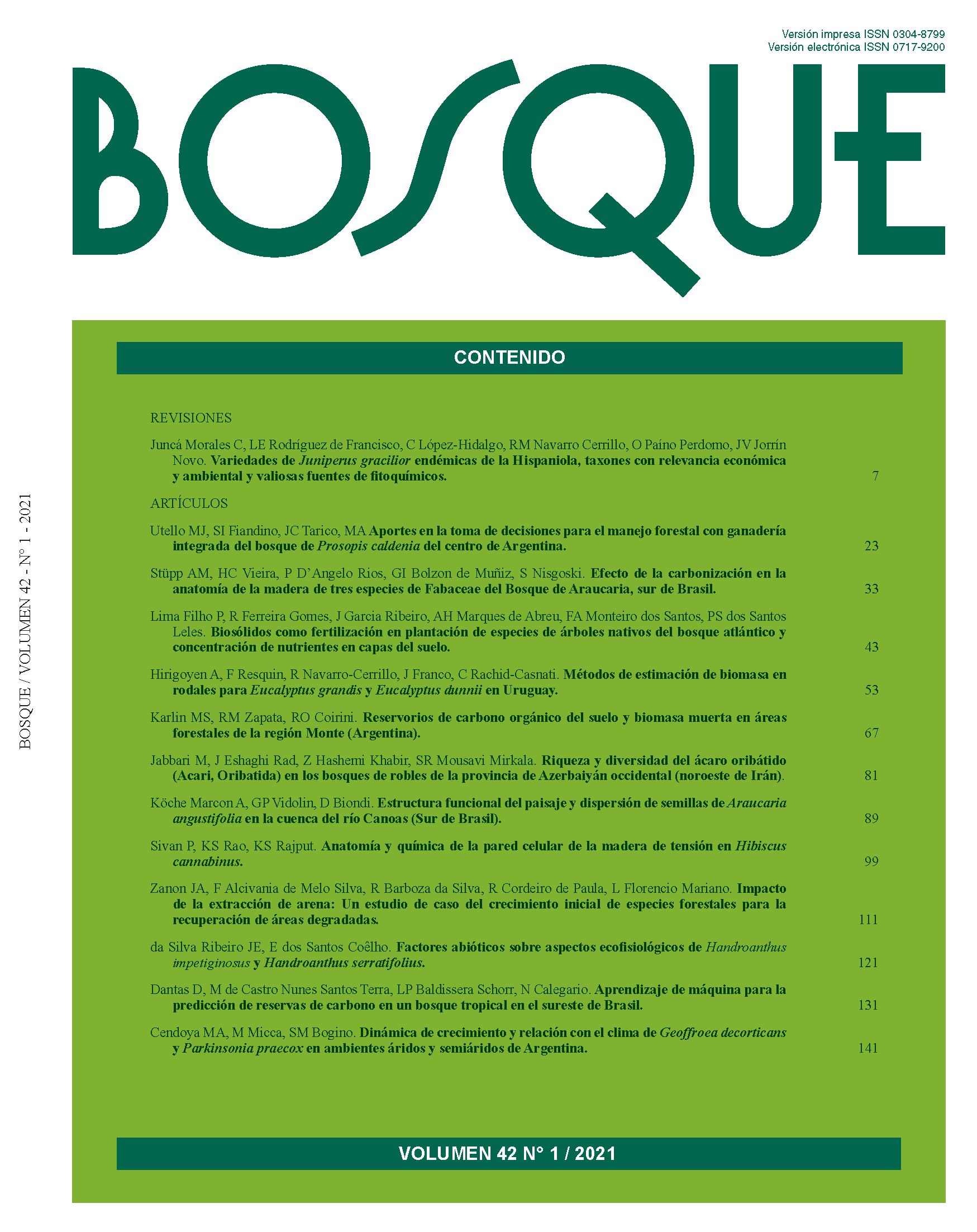Biosólidos como fertilización en plantación de especies de árboles nativos del bosque atlántico y concentración de nutrientes en capas del suelo
Contenido principal del artículo
Resumen
El biosólido de lodos de depuradora, producto del tratamiento de aguas residuales urbanas, es un material rico en materia orgánica y nutrientes con potencial uso en silvicultura. El objetivo fue evaluar el crecimiento de Ceiba speciosa, Peltophorum dubium y Sapindus saponaria y la concentración de nutrientes y metales pesados en diferentes capas del suelo con aplicación de biosólido como fertilizante al plantar. Se establecieron dos experimentos secuenciales. Primero, en maceta para determinar la mejor dosis para el crecimiento de C. speciosa (0,8, 1,6, 3,2 y 6,4 litros de biosólidos por taza) y el testigo absoluto. Seis meses después de plantar C. speciosa se concluyó que la mejor dosis fue de alrededor de 3,9 litros. Segundo, el experimento de campo utilizó las tres especies de árboles con tratamiento testigo o aplicación de 3.0 litros de biosólidos por hoyo, al momento de plantar. Después de 4 y 12 meses de plantar, C. speciosa y P. dubium respondieron a la aplicación de biosólidos. A los 12 meses fueron evaluados los contenidos de nitrógeno, fósforo, potasio y metales pesados en diferentes capas del suelo. Se encontró que las tazas que recibieron biosólidos tenían valores de fósforo significativamente mayores (excepto la capa de suelo de 75-100 cm) y metales pesados. No hubo lixiviación de nitrógeno, fósforo ni potasio en las capas del suelo. Los contenidos de metales pesados en el perfil del suelo estuvieron por debajo de los valores máximos estipulados por la legislación.

